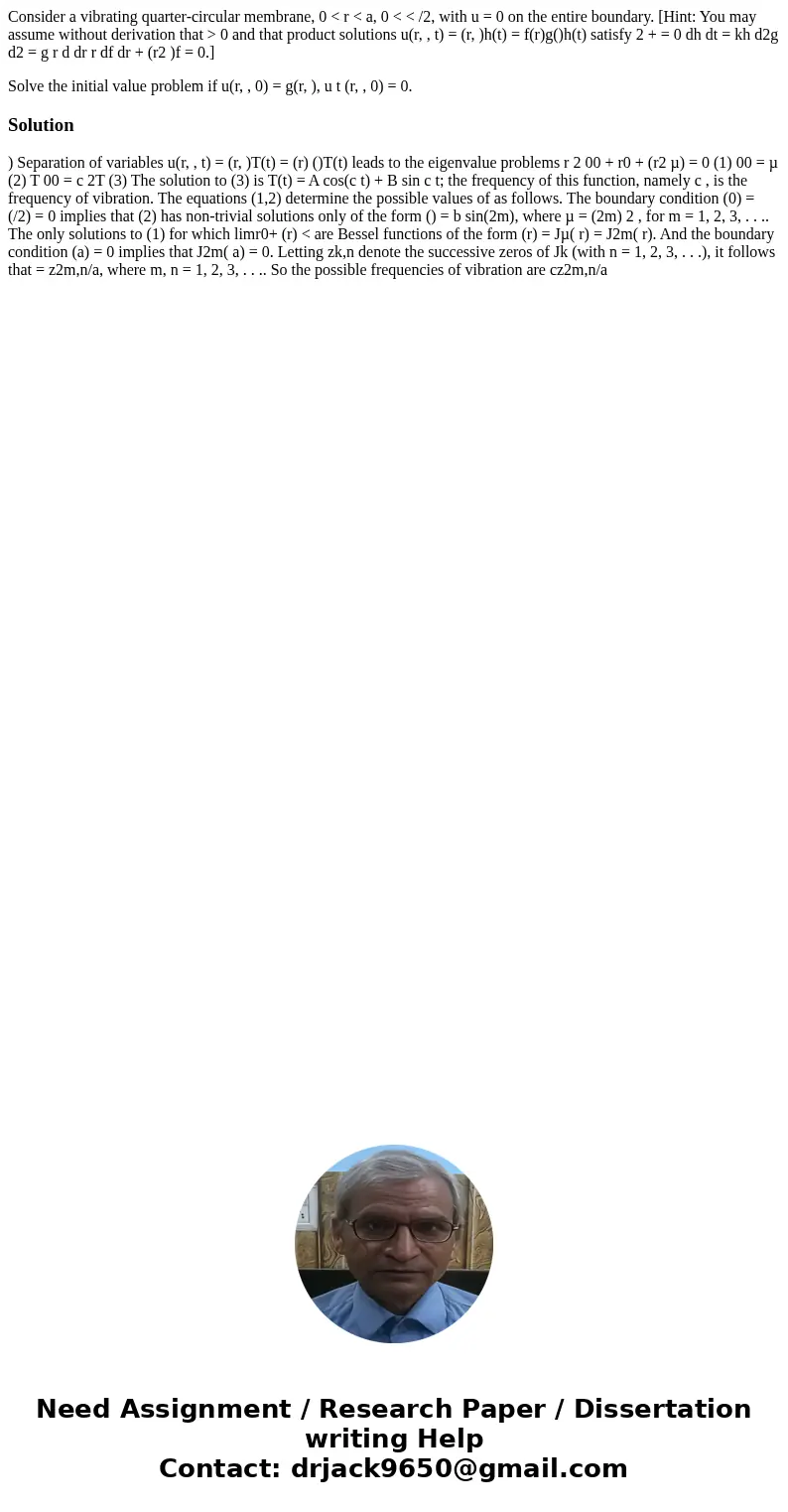Consider a vibrating quartercircular membrane 0 r a 0 2
Consider a vibrating quarter-circular membrane, 0 < r < a, 0 < < /2, with u = 0 on the entire boundary. [Hint: You may assume without derivation that > 0 and that product solutions u(r, , t) = (r, )h(t) = f(r)g()h(t) satisfy 2 + = 0 dh dt = kh d2g d2 = g r d dr r df dr + (r2 )f = 0.]
Solve the initial value problem if u(r, , 0) = g(r, ), u t (r, , 0) = 0.
Solution
) Separation of variables u(r, , t) = (r, )T(t) = (r) ()T(t) leads to the eigenvalue problems r 2 00 + r0 + (r2 µ) = 0 (1) 00 = µ (2) T 00 = c 2T (3) The solution to (3) is T(t) = A cos(c t) + B sin c t; the frequency of this function, namely c , is the frequency of vibration. The equations (1,2) determine the possible values of as follows. The boundary condition (0) = (/2) = 0 implies that (2) has non-trivial solutions only of the form () = b sin(2m), where µ = (2m) 2 , for m = 1, 2, 3, . . .. The only solutions to (1) for which limr0+ (r) < are Bessel functions of the form (r) = Jµ( r) = J2m( r). And the boundary condition (a) = 0 implies that J2m( a) = 0. Letting zk,n denote the successive zeros of Jk (with n = 1, 2, 3, . . .), it follows that = z2m,n/a, where m, n = 1, 2, 3, . . .. So the possible frequencies of vibration are cz2m,n/a

 Homework Sourse
Homework Sourse